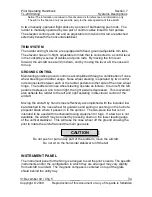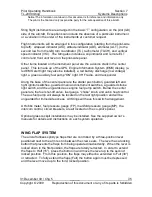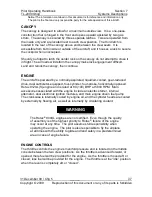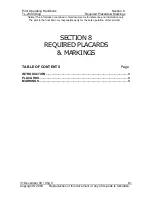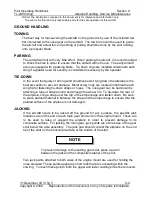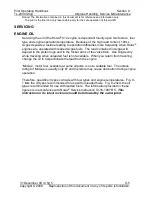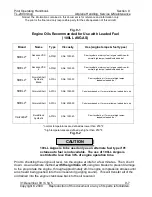
Pilot Operating Handbook
Section 7
TL-2000
Sting
Systems Descriptions
Notice! The information contained in this document is for reference and information only.
The pilot is the final and only responsible party for the safe operation of this aircraft.
31 December 09 / Chg 5
______
7-18
Copyright © 2009 Reproduction of this document or any of its parts is forbidden.
On later model aircraft the static ports are located on both sides of the aft fuselage
and the ports on the pitot tube are not functional.
AIRSPEED INDICATOR
The airspeed indicator (ASI) is the instrument that displays how fast the aircraft is
traveling, in knots, through the air. Ram air pressure and static atmospheric
pressure supplied by the pitot tube are compared by a diaphragm that expands
and contracts as the difference between the two varies. Linkages are connected
between the diaphragm and the indicator needle gives the pilot a visual reading of
the indicated airspeed at any given time.
ALTIMETER
The altimeter (ALT) contains aneroid wafers that expand and contract as
atmospheric pressure changes. As altitude increases, the atmospheric pressure
decreases, and the aneroid wafers expand. As altitude decreases, the aneroid
wafers will contract. Atmospheric pressure is supplied to the altimeter by the static
ports on the pitot tube or aft on the fuselage. Mechanical linkages attached to the
aneroid wafers move the needles on the altimeter face. A knob on the altimeter’s
face allows the pilot to enter the correct barometric pressure into the Kollsman
window.
When setting the current barometric pressure in the Kollsman
window for the first flight of the day, note the difference between the
indicated altitude and the known field elevation. This will give you a
correction factor for airborne resetting.
VERTICAL SPEED INDICATOR
The vertical speed indicator (VSI) provides the pilot with rate of climb and rate of
descent. It acts quite similar to the altimeter. Atmospheric pressure is supplied by
the static ports on the pitot tube or aft fuselage, and this air is sent into a holding
chamber. However, unlike the altimeter, this chamber also has a metered leak
attached to it that allows the pressure inside the chamber to eventually equalize
with the pressure outside of the chamber.
As the aircraft climbs, pressure decreases and this is displayed by the needle on
the VSI as a rate of climb. When the aircraft stops climbing, the metered leak
allows the pressures to equalize, and thus the indicator needle returns to zero, or
no rate of climb.
NOTE

